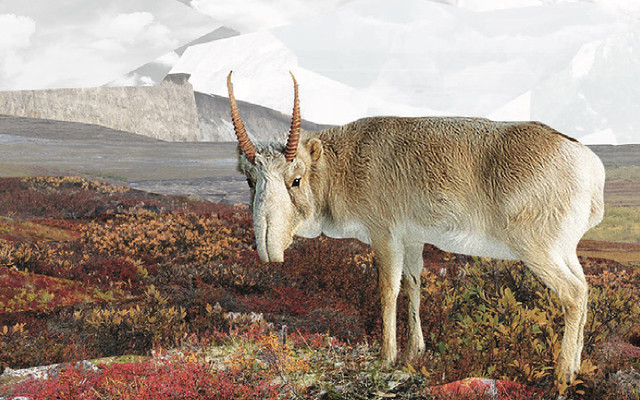The saiga antelope (/ˈsaɪɡə/, Saiga tatarica) is a critically endangered antelope that originally inhabited a vast area of the Eurasian steppe zone from the foothills of the Carpathian Mountains and Caucasus into Dzungaria and Mongolia.
They also lived in Beringian North America during the Pleistocene. Today, the dominant subspecies (S. t. tatarica) is only found in one location in Russia (in The Republic of Kalmykia) and three areas in Kazakhstan (the Ural, Ustiurt and Betpak-Dala populations). A proportion of the Ustiurt population migrates south to Uzbekistan and occasionally Turkmenistan in winter. It is extinct in People’s Republic of China and southwestern Mongolia. It was hunted extensively in Romania and Moldova until it became extinct in those regions at the end of the 18th century. The Mongolian subspecies (S. t. mongolica) is found only in western Mongolia.[3]
Saigas form very large herds that graze in semideserts, steppes, grasslands and possibly open woodlands eating several species of plants, including some that are poisonous to other animals. They can cover long distances and swim across rivers, but they avoid steep or rugged areas. The mating season starts in November, when stags fight for the acceptance of females. The winner leads a herd of five to 50 females.[citation needed] In springtime, mothers come together in mass to give birth.[15] Two thirds of births will be twins, the remaining third of births will be of a single foal.[citation needed]
Saiga, like the Mongolian gazelles, are known for their extensive migrations across the steppes that allow them to escape natural calamities.[16] Saiga are highly vulnerable to wolves. Juvenile saiga are targeted by foxes, steppe eagles, golden eagles, dogs and ravens.[2]
(From Wikipedia, June 2018)




